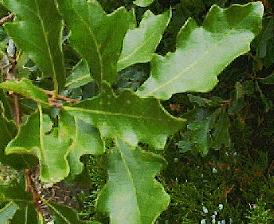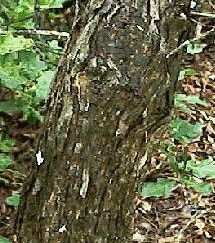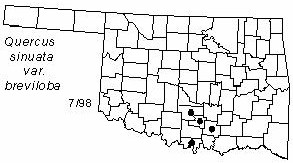

Shrub or small tree to 5 m (16 ft) tall, often with several trunks to 15 cm (6 in) diameter. Twigs gray or brown, usually glabrous, terminated by a cluster of small rounded dark brown buds. Bark on larger stems light gray and scaly or furrowed. Leaves variable, usually obovate or elliptical, 5-10 cm (2-4 in) long, 2-4 cm (0.8-1.6 in) wide, shallowly lobed or wavy-margined, short-pointed or blunt at base, rounded at tip, glabrous and shiny green above, gray-green below with stellate hairs. Acorns mature in first year, short-stalked, egg-shaped, 12-15 mm (0.5-0.6 in) long, about 1/4 enclosed by cup.
Distribution: This variety is native to southcentral Oklahoma, central Texas, and northern Mexico.
Habitat: usually found on or near limestone outcrops.
Comment: Numerous apparent hybrids with Q. stellata are found in the Arbuckle Mountains of Oklahoma. Quercus is the ancient classical name for the European oaks; sinuata refers to the wavy margins of the leaves; breviloba refers to the short lobes of the leaves.
NWI status: none
Distribution in Oklahoma: 
BACK
NEXT
RETURN TO INDEX
Last update: 9/17/99
 Go to Oklahoma Biological Survey Home Page
Go to Oklahoma Biological Survey Home Page
 Disclaimer
Disclaimer